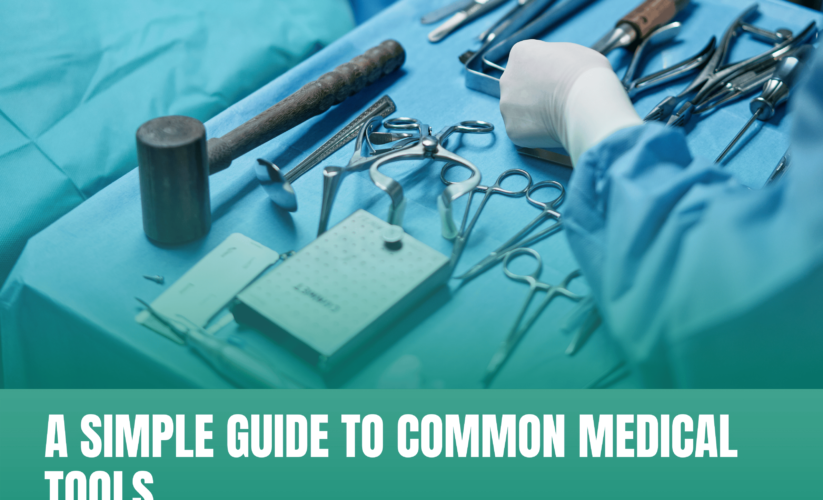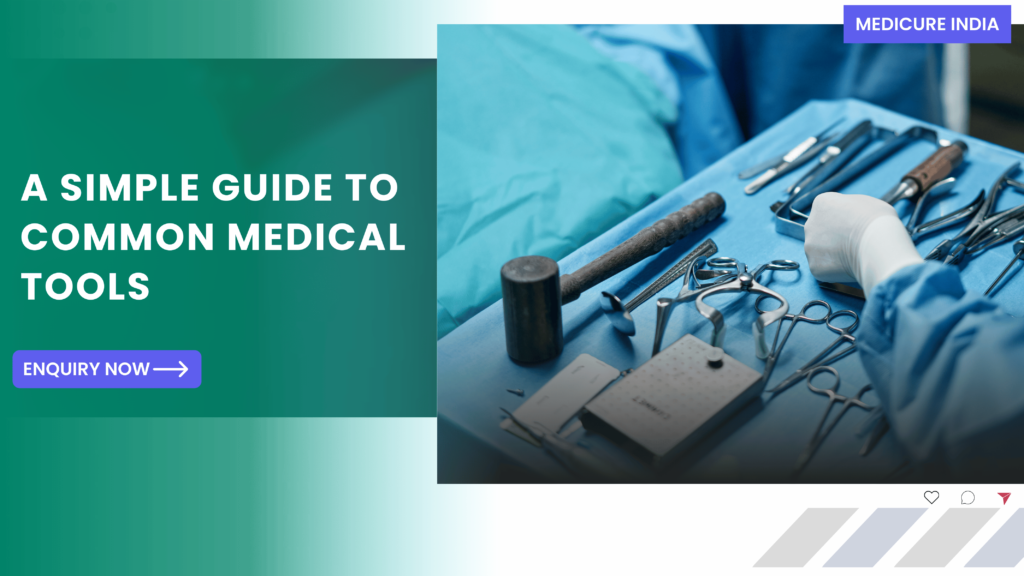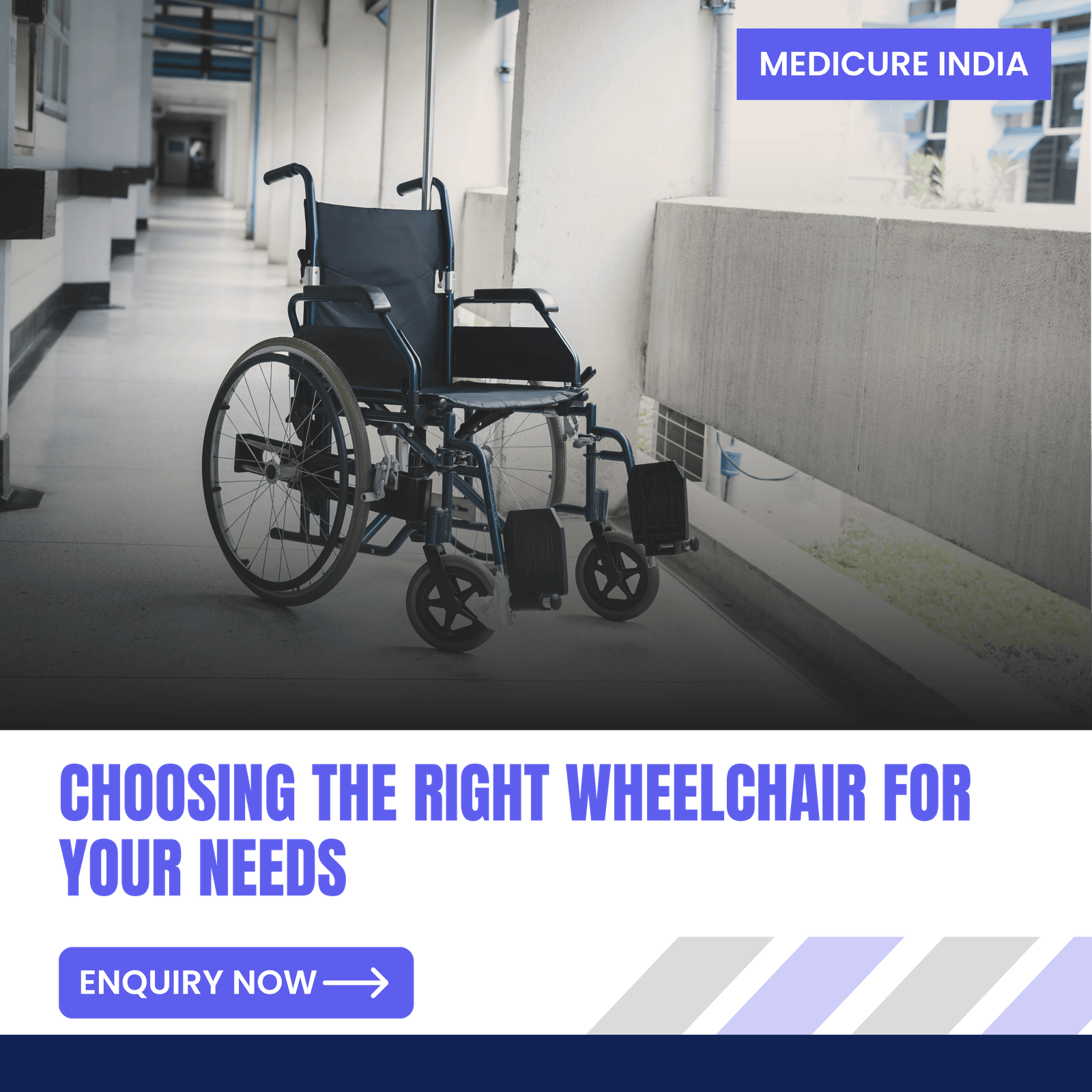A Simple Guide to Common Medical Tools

Medical tools are important instruments that doctors, nurses, and other healthcare workers use to care for patients. These tools help them check health problems, give treatments, and perform surgeries. Some tools are simple, like thermometers, while others are more complex. This guide explains some common medical tools, how they are used, and why they are important.

- Stethoscope
stethoscope** is one of the most common medical tools. Doctors and nurses use it to listen to sounds inside the body, such as the heartbeat or lungs. It helps them hear problems like irregular heartbeats or lung infections.
- Thermometer
thermometer measures a person’s body temperature. Doctors use it to check if someone has a fever. Digital thermometers are popular today because they give quick and accurate readings. They are important for diagnosing illnesses like flu or infections.
- Blood Pressure Monitor (Sphygmomanometer)
A blood pressure monitor measures the pressure of blood in the arteries. High blood pressure can cause serious health problems like heart disease. That is why it’s important to check blood pressure regularly.
- Syringe
A syringe is used to inject medicine or take out blood from the body. It has a hollow needle that delivers or draws fluids. Syringes are also used to give vaccines. They are always disposable to prevent infections.
- Scalpel
A scalpel is a small, sharp knife used by surgeons during operations. It helps them make clean and precise cuts in the skin or tissue. After surgery, the skin is usually stitched to help it heal.
- Forceps
Forceps are like tweezers used by doctors to pick up or hold objects during medical procedures. They are helpful in surgeries and when dressing wounds. Forceps are also used to hold tissues or medical supplies like gauze.
- Otoscope
An otoscope is a tool that helps doctors look inside the ears. It has a light and magnifying glass to see clearly. Doctors use it to check for ear infections or blockages.
- Reflex Hammer
A reflex hammer is used by doctors to test a patient’s reflexes. They gently tap certain parts of the body, like the knee, to see how the nerves respond. It helps check if the nervous system is working properly.
- Tongue Depressor
A tongue depressor is a flat stick that helps doctors see inside the mouth and throat. It presses down the tongue so they can check for throat infections or other problems.
- Defibrillator
A defibrillator is a life-saving device that sends an electric shock to the heart. It is used when someone’s heart stops or beats irregularly. Defibrillators help restore a normal heartbeat during emergencies like cardiac arrest.
- Medical Gloves
Gloves protect doctors and patients from germs and infections. Healthcare workers wear gloves during exams, surgeries, and any time they handle blood or body fluids. They help stop the spread of diseases.
- Surgical Masks and Face Shields
Masks and face shields protect healthcare workers from viruses and bacteria. Masks cover the nose and mouth, while face shields cover the entire face. These are especially important during surgeries or outbreaks of contagious diseases.
- Medical Scissors
Medical scissors are used to cut bandages, stitches, or even skin during medical procedures. Some scissors are designed for soft tissues, while others are for cutting harder materials like plaster.
- Pulse Oximeter
A pulse oximeteris a small device that measures the oxygen level in the blood. It clips onto the finger and gives a quick reading. It is useful for people with breathing problems or patients in surgery.
- ECG Machine (Electrocardiogram)
An ECG machine records the electrical activity of the heart. It helps doctors find heart problems, like irregular heartbeats. Small sensors called electrodes are placed on the chest to check how well the heart is working.
- IV Drip (Intravenous Therapy)
An IV drip is used to give fluids or medicines directly into the bloodstream. A small tube is inserted into a vein, and the fluid is delivered slowly over time. It is common in hospitals, especially for dehydrated patients.
- Bandages and Dressings
Bandages and dressings cover wounds to protect them from infection and help them heal. They can also support injured muscles or broken bones. Bandages are a simple but important part of wound care.
- Glucometer
A glucometer measures blood sugar levels. It is used by people with diabetes to monitor their sugar levels regularly. A small drop of blood is placed on a test strip, and the glucometer shows the sugar level.
Conclusion
Medical tools are essential for healthcare workers to diagnose and treat patients. Whether it’s a simple thermometer or a life-saving defibrillator, each tool plays a key role in ensuring patients get the best care possible. Without these tools, doctors and nurses would find it much harder to help people stay healthy and recover from illnesses.




